- Your back hurts
- You injured your rotator cuff and had shoulder surgery.
- Someone rear-ended you and now you can’t move your neck.
- You’ve had a mastectomy and your arm is swollen.
- You had your knee replaced.
- You’re trying to live a healthy lifestyle
- Every time you have sex, it hurts.
I hope no one is experiencing all these things at once. But some of you may have dealt with at least one.
They all have something in common. Do you know what it is? You might be able to come up with several answers.
The one I’m looking for is physical therapy.
A physical therapist can help you with every single one of the issues I listed. And probably more.
A look back
The profession has broadened considerably since it was introduced in this country in 1914. But some physical therapy techniques can be traced all the way back to ancient Greece. Hippocrates and Hector supposedly used massage and water therapy on their patients.
Mary Brunet has been a physical therapist for 32 years. In 1994, she and her husband Michel co-founded Back in Motion Physical Therapy. It was then called Gorham Physical Therapy. Mary recently gave me a short history lesson. She says physical therapy started in the United States during World War I.
“There were a lot of soldiers coming back with amputations and injuries and they needed help, “she explained. “Physical therapists were initially called reconstruction aides. A lot of them started as nurses who got specific training. They helped patients with exercises for strengthening and amputees by working the tissue, desensitizing it and then helping them learn how to walk.”
A name that every physical therapy student learns in school is Mary McMillan. She’s considered the “mother of physical therapy.” She was one of the first reconstruction aides in the country and helped form their first professional association. In 1921, she became president of the American Women’s Physical Therapeutic Association. In the 1930s, the association allowed men to join. It’s still going strong and is now known as the American Physical Therapy Association (APTA).
With each decade, the profession continued to grow. According to APTA history, “With the advent of World War II and a nationwide polio epidemic during the 1940s and 1950s, physical therapists were in greater demand than ever before.”
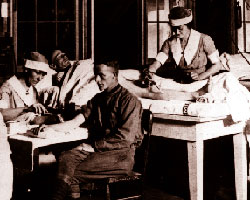
Reconstruction Aides treat soldiers at Fort Sam Houston, Texas, in 1919. Source: American Physical Therapy Association
Up until the 1940s, physical therapists often used massage and exercise to treat patients.
In the 1950s, they started using manipulative therapy for spine and joint pain. Patients were usually treated in the hospital.
In the 1980s, technology exploded and they began using computers and ultrasound and electrical stimulation.
In the 1990s, manual therapy became important. It was then that Mary Brunet did a one-year residency program on manual therapy at Kaiser Permanente.
“The residency program gets you strong in specific treatment skills, such as joint mobilization, neurodynamics, “she says. “I specialize in orthopedic manual therapy. Spine, shoulder, neck pain. Orthopedic injuries, sports injuries. Injured joints, muscles, soft tissue.”
Required training to become a physical therapist
Not only has the field of physical therapy evolved in the United States over the past century, so has the required training. Did you know that to become a physical therapist today, you need a doctorate degree?
“In the very beginning,” says Mary, “it was a certificate program. Then it went to a bachelor’s program, which lasted for quite a while. When I started my program in 1981, schools were beginning to transition to a master’s degree, which is what I have. In 2010, APTA, our national organization mandated that it become a doctorate program.”
That astonished me. A doctorate degree?
First, you complete what used to be known as a premed program. Nowadays a lot of colleges have dropped premed and offer health sciences instead. “It’s health sciences,” says Mary, ”because there are so many health degrees. Physical therapy, occupational therapy, physician assistant, for instance. They all need the sciences, chemistry, biology, physiology, anatomy and psychology. To become a physical therapist you can get your undergraduate degree in any area as long as you have all those prerequisites.”
The physical therapy doctorate program comes after graduation and is typically a three-year program. There are also additional clinical residency and fellowship program if you want to specialize like Mary did.
A greater appreciation
Physical therapists still help people recover from injuries or surgery. They also help them improve or restore their mobility and reduce or manage their pain. Some are trained to reduce problems with lymphedema after a mastectomy. Others help restore weak pelvic floor muscles that cause bladder problems, pelvic pain or pain during sex. They also help prevent problems by developing individualized fitness plans.
I learned quite a bit about physical therapy thanks to Mary Brunet. Thought I’d pass it along. One more thing, if you’re interested in becoming a physical therapist or know someone else who is, you’ll find information on the APTA website. The profession gets a huge recommendation from Mary. “I do career talks at different schools all the time,” she says. “I always tell the students I feel so lucky because I get to help people. That in itself is a huge win every day. You change people’s lives and then get paid for it. How can you not enjoy?”

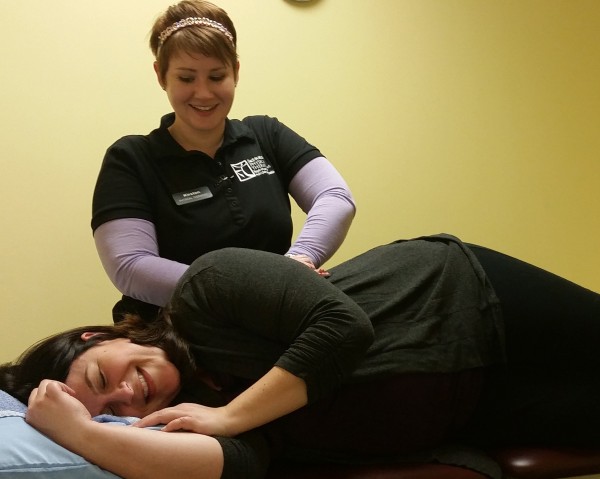
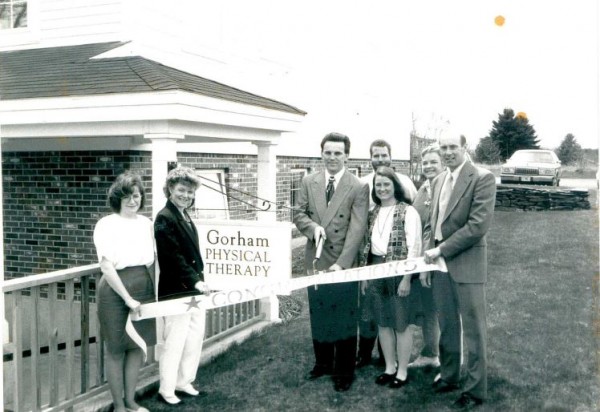
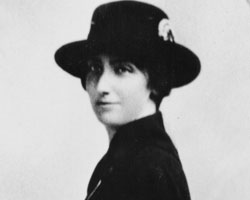
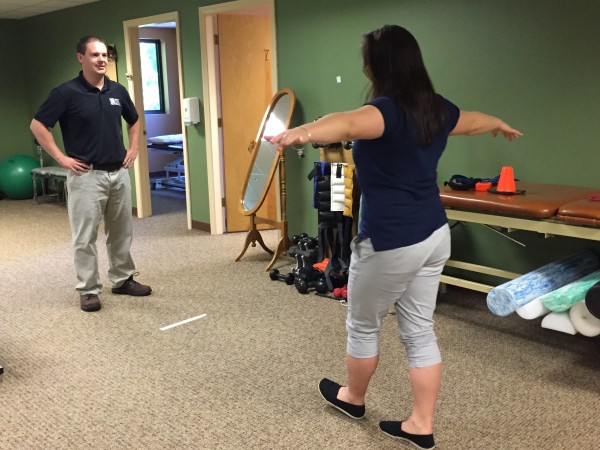
Hi Diane,
My mother fell and broke her arm at age 88 and had surgery to repair it, then several weeks of physical therapy which then allowed her to play golf and continue to drive for a few more years. The physical therapist not only helped her regain physical abilities, she helped my mom regain confidence and a feeling of well-being — two important aspects for recovery.
Thank you for doing this piece on physical therapists. I did not know they needed a doctorate degree, but it makes sense, given their roles in helping people recover from serious injuries and conditions.
Betsy
I love hearing stories like that. Many years ago I did a health report on Fred Hale, who was 104, I think. He recovered from two broken hips, (not at the same time!) with the help of a physical therapist. He lived in a facility for elderly people and claimed to be very unhappy there. He said he had nobody to hang out with because everyone was so old! He was great fun to visit.